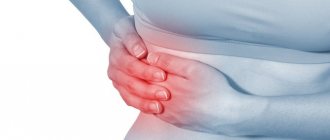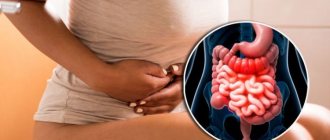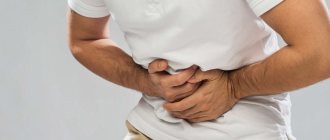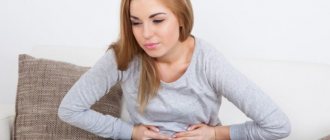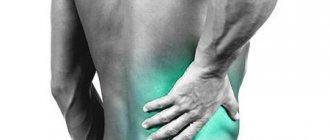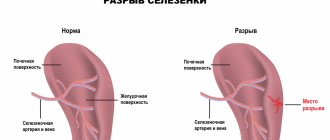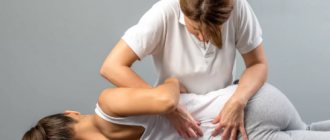February 8, 2021
Pain syndrome is the body’s signal about a pathological process. Abuse of painkillers is not the best solution to the problem. Examination and consultation with a specialist will prevent the development of serious complications.
Pain in the lower abdomen in a man is a symptom of various diseases. These include urological, oncological, neurological pathologies, and disorders of the reproductive system. For qualified help, you can contact the Dr. Medical Center. AkNer. Experienced specialists work here who have all the necessary equipment for diagnosis and treatment.
Intestinal tract disease
Pain in the left lower abdomen in men may be a sign of the following diseases:
- proctosigmoiditis (proctitis);
- sigmoiditis;
- diverticulitis;
- intestinal obstruction;
- nonspecific ulcerative colitis;
- polyps of the sigmoid colon;
- sigmoid/rectal cancer.
Proctosigmoiditis (proctitis)
Pain in the left side can be caused by combined inflammation of the mucous surface of the rectum and sigmoid colon. Signs of the disease are:
- pain in the lower abdomen on the left, radiating to the perineum, bladder area, buttocks and anterior thigh;
- frequent urge to defecate, accompanied by the release of a small amount of crumbly stool containing blood and mucous inclusions;
- dyspeptic disorder – diarrhea (constipation accompanies the disease much less frequently).
The chronic form of sigmoiditis is characterized by the release of mucus from the anus, which causes itching and irritation of the skin around the anus. The cause of the development of the disease can be: infections of various origins, in particular, dysentery, typhoid fever, as well as syphilis and gonorrhea, constipation - particles of dried feces cause irritation of the intestinal walls, an allergic reaction.
After diagnosing the cause of intestinal inflammation, the man is prescribed therapy appropriate to the condition.
..
Sigmoiditis
Sigmoiditis is an inflammation of the sigmoid colon, occurring in acute and chronic forms. Most often it is a combined lesion of the sigmoid and rectum. In this case, rectosigmoiditis is diagnosed. Sometimes the clinical picture of sigmoiditis can be traced to colitis - inflammation of the colon.
Sigmoiditis is one of the causes of pain in the lower left abdomen in men
There are several types of sigmoiditis:
- Catarrhal. Only the superficial layer of the intestinal mucosa is involved in the inflammatory process. The condition is accompanied by the release of a small amount of mucus.
- Erosive. On the surface of the mucosa, erosive areas are formed that do not affect the deeper layers of the mucosa.
- Ulcerative. Deep ulcers appear on the surface of the mucosa.
- Perisigmoiditis. Inflammation spreads to the serous membrane, which causes the formation of infiltrates of various sizes around the intestine. The mesentery is involved in the pathological process. Adhesions are formed.
Symptoms of sigmoiditis include the following manifestations: sharp cramping pain in the left half of the abdomen, spreading to the left leg and lumbar region, nausea, vomiting, bloating, upset stool (diarrhea), combined with frequent false urges - foul-smelling stools containing blood and mucus (resembles meat slop).
Only a mixture of mucus and blood appears, without particles of feces, intoxication of the body - headache, weakness, weakness, increased body temperature. Treatment of the disease is conservative. The patient is prescribed a therapeutic diet, as well as taking antibiotics and probiotics to restore the intestinal microflora.
Diverticula of the sigmoid colon
Pain in the left lower abdomen on the left may be a symptom of diverticulitis of the sigmoid colon. The disease is accompanied by the development of pathological protrusions in the intestinal walls, and is one of the most commonly diagnosed gastrointestinal pathologies.
The reasons for the formation of diverticula are: changes in the walls of the intestine of a dystrophic nature, disturbances of intestinal motility, causing stagnation of feces in the lumen of the sigmoid colon, vascular pathologies of the gastrointestinal tract. Most often, these factors work in combination.
[node:field_field_doprekl]
The period of exacerbation of diverticulitis is accompanied by the following symptoms:
- sharp/cramping, sometimes aching pain in the lower abdomen;
- frequent constipation;
- bloating;
- heaviness in the abdomen, decreasing after defecation;
- nausea ending in vomiting;
- the presence of blood impurities in the stool;
- increased body temperature;
- general malaise.
Treatment of the disease is complex and includes several points:
- Taking medications. The man is prescribed drugs from the category of antibacterial drugs, antispasmodics, laxatives, prokinetics and enzymes.
- Compliance with a therapeutic diet.
In severe cases, surgery is prescribed.
Intestinal obstruction
Sometimes a man’s left side in the lower abdomen hurts due to intestinal obstruction. This pathological condition occurs as a result of the presence of mechanical/functional reasons that impede the passage of food and liquid through the colon.
The main signs of obstruction of the large intestine include: spastic pain localized in the left lower abdomen, attacks of nausea ending with vomiting, severe asymmetric bloating, constipation, delayed passage of gases.
Causes of nagging pain in the lower abdomen
The characteristic clinical picture develops against the background of complete well-being. The first symptom is severe pain in the left lower abdomen.
Initially, it is determined in a specific place, and then, as the condition worsens, it takes on a diffuse character.
The patient feels strong contractions of the intestines, accompanied by active seething. As the pathology progresses, the person’s condition deteriorates greatly: the patient turns pale and experiences significant sweating.
Lack of adequate treatment for the condition may pose a threat to human life. Against the background of obstruction, necrotization of the affected part of the intestine, caused by impaired local circulation, cannot be ruled out. Subsequently, intestinal perforation and the development of peritonitis occur.
Nonspecific ulcerative colitis
Nonspecific ulcerative colitis is a diffuse ulcerative inflammation of the colon mucosa. The origin of the disease has an unclear etiology. The reasons for its development may be:
- viruses and bacteria;
- autoimmune disorders.
Nonspecific ulcerative colitis is characterized by a wave-like course: persistent remission is replaced by exacerbations.
A comprehensive examination is necessary to differentiate pathology
Symptoms of pathology in the acute period are:
- bleeding from the anus;
- painful tenesmus;
- nagging pain in the lower abdomen;
- frequent diarrhea;
- stool contains blood.
Nonspecific ulcerative colitis is characterized by weight loss, which is explained by decreased appetite, impaired digestion of food, and frequent loose stools. Of particular danger to humans is the fulminant form of pathology, which develops at lightning speed. Its most severe complications are perforation of the intestinal walls and its toxic enlargement.
Since the reasons for the development of pathology are not fully known to doctors, therapy comes down to reducing inflammation, reducing pathological symptoms and preventing exacerbation. Treatment involves the use of therapeutic and surgical techniques. Compliance with a therapeutic diet becomes an important point.
[node:field_field_doprekl2]
Polyps of the sigmoid colon
The cause of pain can be polyps growing from the tissues of the glandular epithelium and directed into the intestinal lumen. They may look like mushroom-shaped, cluster-shaped or spherical formations, attached to the surface of the mucous membrane with the help of a stalk. Initially they are benign, but have a tendency to degenerate.
The following types of polyps are distinguished:
- Hyperplastic. The most commonly diagnosed neoplasms resemble flat, round plaques. They turn into a cancerous state quite rarely.
- Adenomatous. They are prone to degeneration and belong to precancerous conditions. At the very beginning of development they do not declare themselves in any way. As they grow, they can cause intestinal obstruction and frequent bleeding.
- Diffuse. The causes of their formation are hereditary diseases.
The causes of the formation of polyps are: chronic pathologies of the gastrointestinal tract - diverticulitis, Crohn's disease, ulcerative colitis, intestinal dysbiosis, predisposition at the genetic level, insufficient physical activity, low fiber content in the food consumed.
Symptoms of sigmoid colon polyps are (clinical symptoms appear late and only after the size of the polyp exceeds 3 cm):
- when trying to sit down or make any sudden movement, the patient experiences sharp pain in the lower left segment of the abdomen;
- the presence of streaks of fresh blood in the stool, which is explained by injury to villous polyps;
- a large volume of mucus in the stool indicates the presence of glandular polypous formations;
- alternating constipation and diarrhea;
- false urge to defecate;
- bloating caused by increased flatulence;
- frequent heartburn and belching.
Polyps of the sigmoid colon are asymptomatic for a long time
The last stages of polyposis are characterized by a deterioration in the patient's condition: intestinal obstruction develops, fatigue increases, and an increase in body temperature is observed.
Can your stomach hurt from constipation?
Constipation (colostasis) is characterized by difficulty defecating, low stool frequency, and insufficient bowel movements. Signs of constipation also include the absence of bowel movements for two days or more, and hard, dry stools. Other signs may also be observed - symptoms of general intoxication, increased sweating, general poor health, headaches. Problems with defecation are often accompanied by pain in the abdomen, rectum and stomach. All this causes physical discomfort and may indicate the presence of serious diseases.
Spleen diseases
The causes of pain may be pathologies of the spleen. Pain in the left lower abdomen may be accompanied by: pathological enlargement of the organ, splenic infarction, abscess, volvulus, myelo- and lymphocytic leukemia.
Enlargement of the spleen
The organ is located in the left hypochondrium, but as a result of pathological expansion, pain occurs in the lower abdomen (its left side). The causes of inflammation can be the inflammatory process, deterioration of blood circulation in the organ.
Signs of pathology are:
- painful intestinal cramps felt in the lower left;
- attacks of nausea ending in vomiting;
- increase in general body temperature.
Splenic infarction
A heart attack is caused by blockage of the lumen of the artery supplying the spleen. In this case, part of the organ dies. Signs of a heart attack include: sharp pain descending from the left hypochondrium down the abdomen, increased pain with a deep breath, movement, coughing, and an increase in body temperature to high levels.
Spleen abscess
Severe pain is accompanied by the formation of ulcers. Symptoms of the condition are as follows: spastic pain in the left hypochondrium, spreading to the left side of the chest and lower abdomen, increasing weakness, increased body temperature, nausea, ending with vomiting.
The condition requires surgical intervention and antibiotic therapy
Volvulus of the spleen
The cause of the condition is a twisting of the artery that supplies the spleen with blood. The defect can be caused by injury to the mesenteric ligaments or their congenital pathology. Symptoms of the pathology may include: bloating, constipation, pain descending from the left hypochondrium down the abdomen, vomiting, gradual deterioration of the condition.
Myelo- and lymphocytic leukemia
Pain develops after eating and when pressing on the area of projection of the spleen. As the condition worsens, the pain will only intensify.
Prevention of pain due to constipation
For the normal functioning of the gastrointestinal tract, you need to drink a sufficient amount of water - at least 1.5–2 liters per day. If constipation is associated with decreased tone of the intestinal muscles and is accompanied by spasms, it is recommended to drink cold mineral water. One glass of water on an empty stomach and before each meal will improve the consistency of stool and facilitate its movement through the intestines.
Water also participates in the process of gas diffusion - some of the gases are absorbed from the intestines into the blood, so an optimal drinking regime is effective as a way to prevent flatulence, including those associated with constipation.
It is important to avoid overeating and sudden changes in diet. It is necessary to minimize stress and maintain a sleep schedule. Researchers say that following a daily routine will help prevent constipation: you should get up and go to bed at approximately the same time, and set aside enough time to go to the toilet in the morning, after breakfast. It is under no circumstances recommended to restrain the urge to defecate, as this can lead to constipation and a decrease in the sensitivity of the intestinal receptors to stretching.
Recommendations regarding diet for existing constipation also apply to prevention: try to eat a sufficient amount of fiber-rich foods, make up your diet from lean meats and fish, cereals, dairy products, fresh fruits, vegetables, herbs, and berries.
Regular preventive visits to the doctor will help exclude gastrointestinal diseases or detect them at an early stage. This is especially important if you are at risk for developing disorders - you have an endocrine disease, pathologies of the digestive system, are limited in physical activity, etc.
You can prevent the occurrence of severe pain due to constipation by observing your body: determine the optimal frequency of bowel movements; ideally, bowel movements should be every morning. If stool is delayed for at least one day, try to take immediate action, if possible: increase the volume of fluid you drink, choose foods with a laxative effect.
Atypical location of the inflamed appendix
With appendicitis, pain is most often determined on the right, but in rare cases the pain shifts to the left. Symptoms of the pathological condition are:
- initially moderate intestinal spasms, intensifying over time - the pain becomes cramping and throbbing;
- nausea ending in vomiting;
- diarrhea (relatively rare);
- increase in body temperature.
Soreness in the lower left abdomen in men may indicate the development of serious illnesses. And if pathological symptoms appear, it is recommended to obtain qualified medical advice.
Why is it important to see a doctor?
There are many causes of groin pain, and the nature of the symptom can only be determined after a thorough diagnosis.
Self-medication can make the problem worse, so it is important to see a doctor as soon as possible. The State Urology Center provides qualified medical care under the compulsory medical insurance policy, so the procedures and treatment prescribed by the doctor will be free for you. First, sign up for a consultation with a specialist, then we can relieve you of unpleasant symptoms and restore your health. April 19, 2021
Hakobyan Gagik Nersesovich - urologist, oncologist, MD, doctor of the highest category, professor
All the symptoms of the disease...

